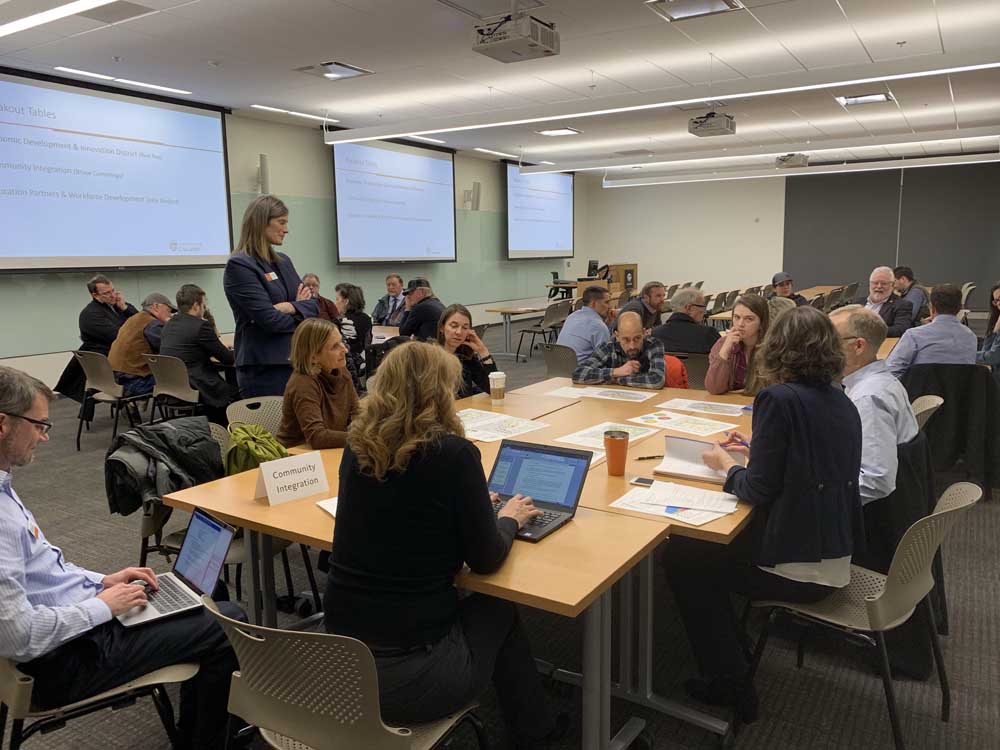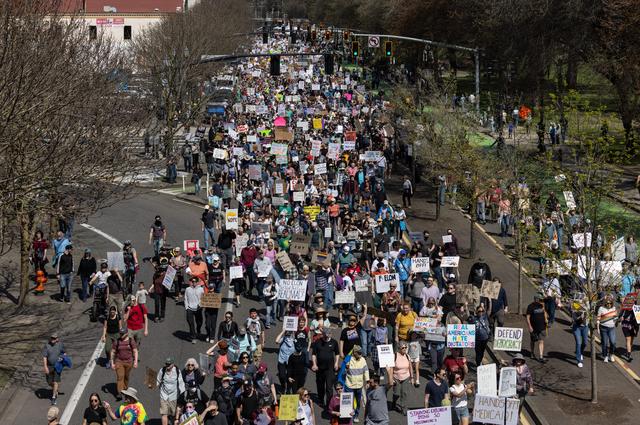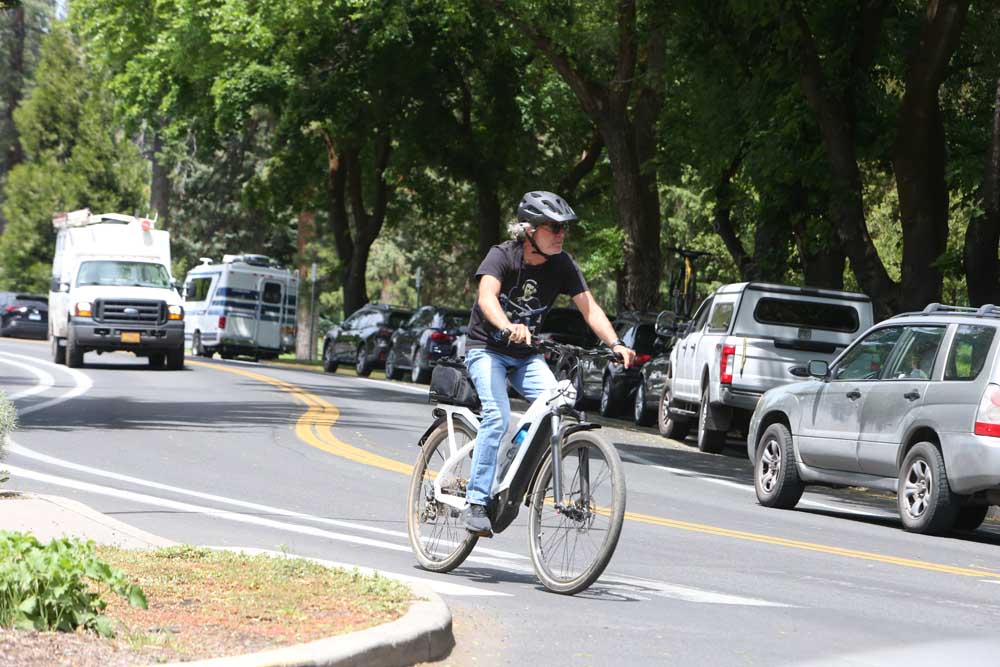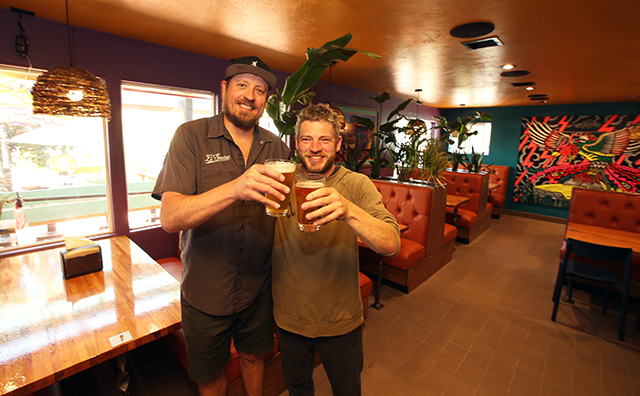Community shows mostly support for OSU-Cascades expansion
Published 12:00 am Thursday, January 17, 2019

- Community members and local leaders discuss the future of the OSU-Cascades campus during an open house Wednesday, Jan. 16, 2019. (Jackson Hogan/The Bulletin)
From a large auditorium for hosting events to more space for students to study and socialize, community leaders and citizens Wednesday night discussed what Oregon State University-Cascades’ expanded campus could look like and how it could integrate into and benefit the Central Oregon community.
The majority of the 20 people present during an open house at the university’s Bend campus were encouraged by what they heard.
“We’re huge supporters of OSU at St. Charles, and they are our support system,” said Lisa Dobey, St. Charles Health System’s executive director of community and philanthropy. “We are just so excited about the promises they have going forward to improve our community and enhance our workforce.”
The meeting opened with an overview of the university’s plans to create a modern, 128-acre campus from land that was once a landfill and a pumice mine as deep as a 10-story building is tall. According to university estimates, realizing that vision could cost $48.1 million, plus an extra $4.8 million in expected added costs for inflation, because making the site construction-ready will take at least 10 years, according to Kelly Sparks, OSU-Cascades’ vice president of finance and strategic planning.
Sparks said the purpose of the evening was to gather feedback from the community about the university’s application for a $500,000 Brownfields Cleanup Grant from the Environmental Protection Agency and to see what role an expanding OSU-Cascades could play in the region.
Various ideas were thrown out for discussion at the meeting.
Deschutes Public Library Director Todd Dunkelberg expressed a desire for a bigger community gathering space for events that could include hosting a popular author. A new building already proposed by OSU-Cascades staff could fill that role.
Brian Fratzke, an executive at the commercial real estate company Fratzke Commercial, said he represents many tech companies that want to expand into Bend but are worried about attracting enough employees with hands-on experience. He believed OSU-Cascades’ proposed Innovation District, where the university will partner with private companies to expand student opportunities, could provide a space where these tech companies could help educate local students.
“Where are the 10 computers that we do HTML programming on?” he said. “Where’s the biotech area where we get to do genetic testing? That’s what we’re interested in.”
The university’s student body president, Rielly King, said the majority of her fellow students agreed that a university expansion is needed, as the current three-building campus is starting to become crowded.
“A lot of times we go to the coffee shop, and there are times where I can’t find a seat in the middle of the day,” she said. “A lot of (students) have different wants for the campus, but all of them agree that we really do need that new space.”
Heather Ficht, executive director of East Cascade Works, a group that helps connect workforces with companies, was very enthusiastic about OSU-Cascades’ expansion plans, saying she was “110 percent supportive.”
“Anything we can do to support the innovation and great work that (OSU-Cascades) does on this campus to expand and offer more classes and more degree programs, the better we’re all going to be,” she said.
A few people at the meeting were citizens not representing any group, such as Amy Fratzke, of Bend, who was excited for OSU-Cascades’ expansion.
“I think it brings a really nice part to our community, to expand it, to get kids here and grow in a positive way,” she said.
According to officials from OSU-Cascades and the Vancouver, Washington-based engineering firm Maul Foster Alongi, to create a walkable campus from the pumice mine and landfill, the university will use material from the sites to raise the bottom of the 100-foot-deep mine, located alongside Chandler Avenue, by about 40 feet. Stacy Frost, principal engineer with Maul Foster Alongi, said this plan will eliminate the need to bring more than 29,000 truckloads of fill to the southwest Bend campus.
Although the university has asked the state legislature for funds to continue expansion, Gov. Kate Brown’s education plan, released in November, didn’t guarantee any cash for OSU-Cascades — the education coordinating committee rankings of projects at every Oregon university puts OSU-Cascades’ request for $12 million for a Student Success Center close to the bottom of the list.
Community members are encouraged to submit public comments until Jan. 22 regarding the EPA grant proposal either through mail or an online form at OSU-Cascades’ website.
— Reporter: 541-617-7854, jhogan@bendbulletin.com






